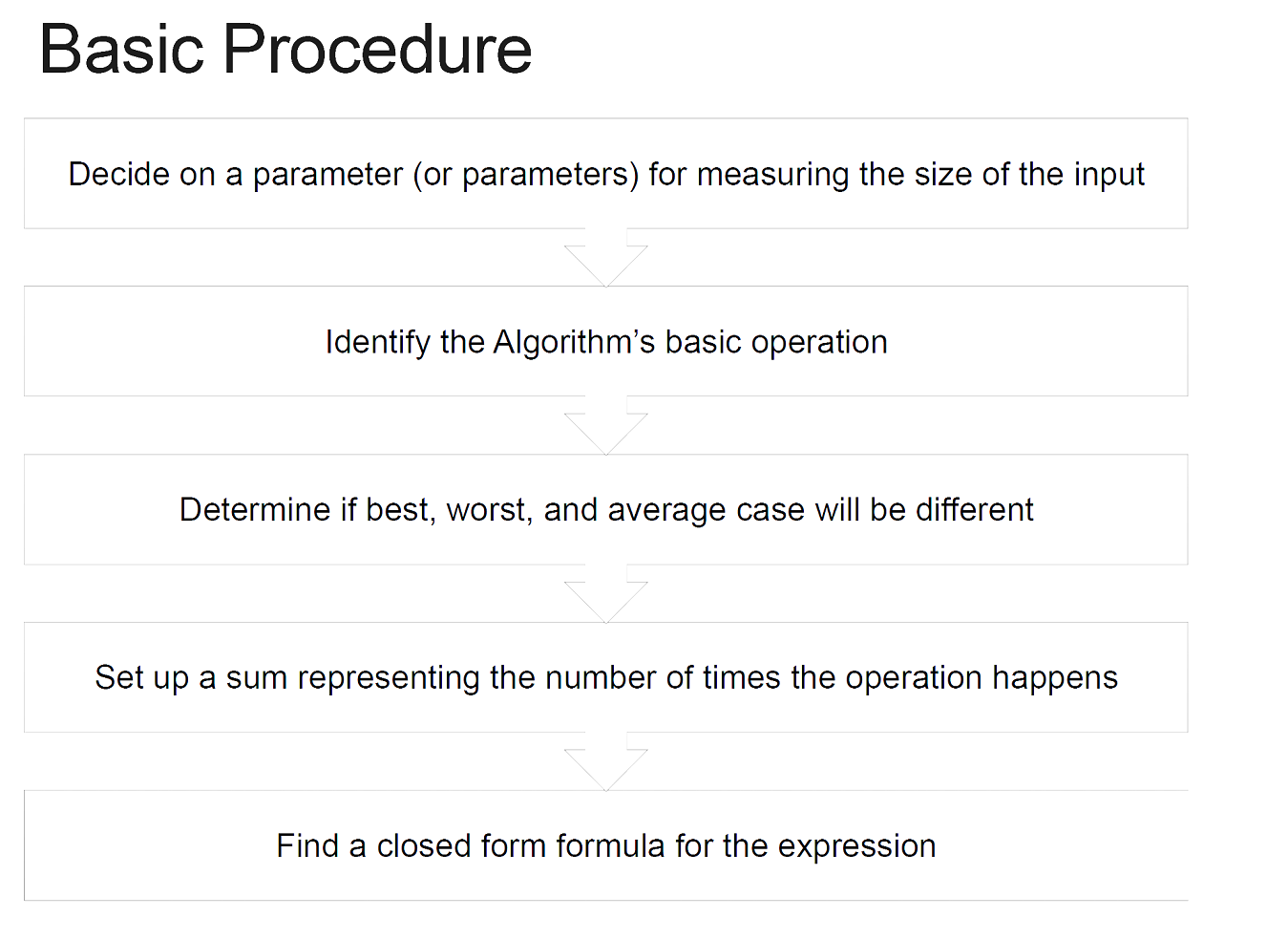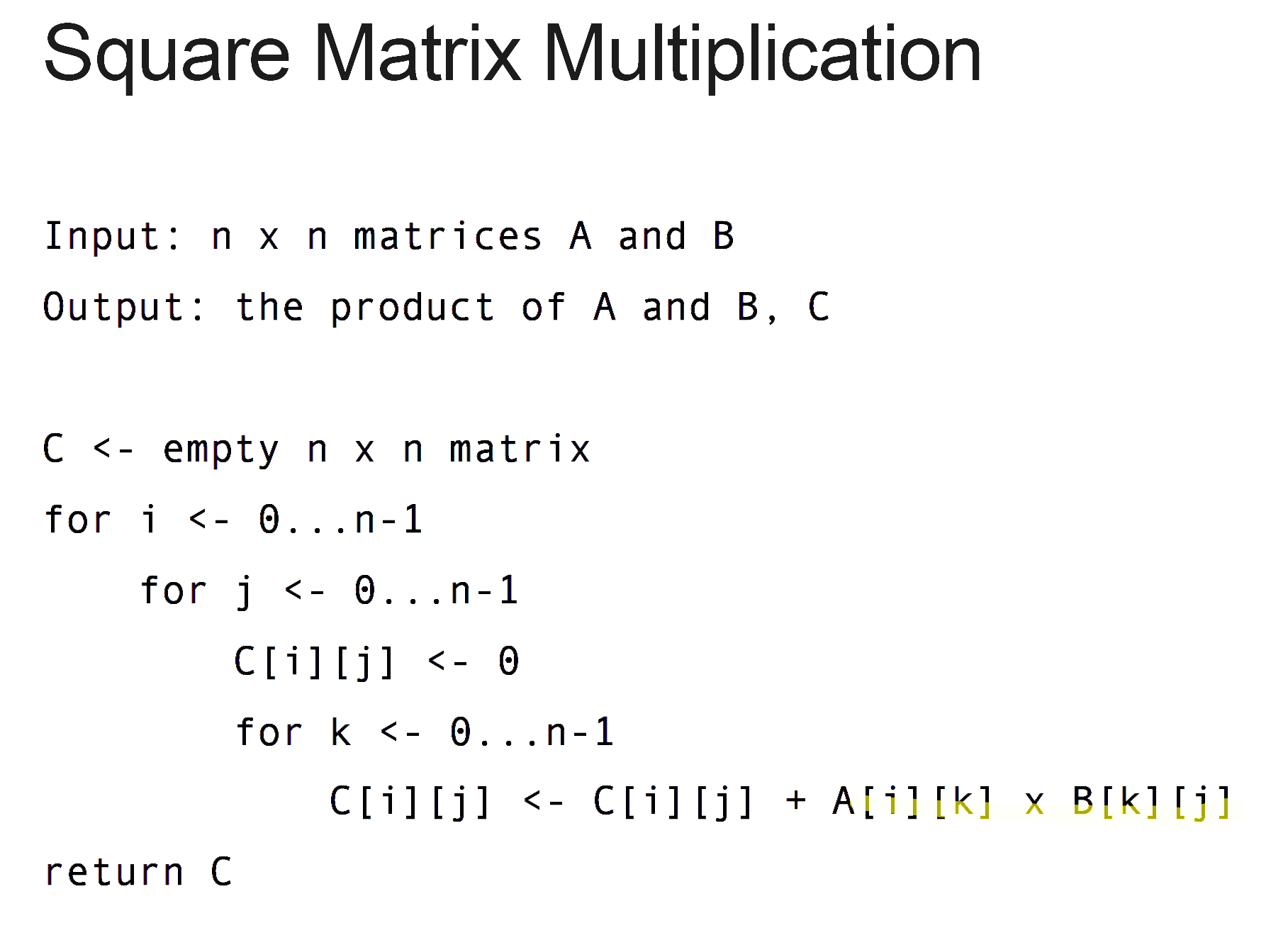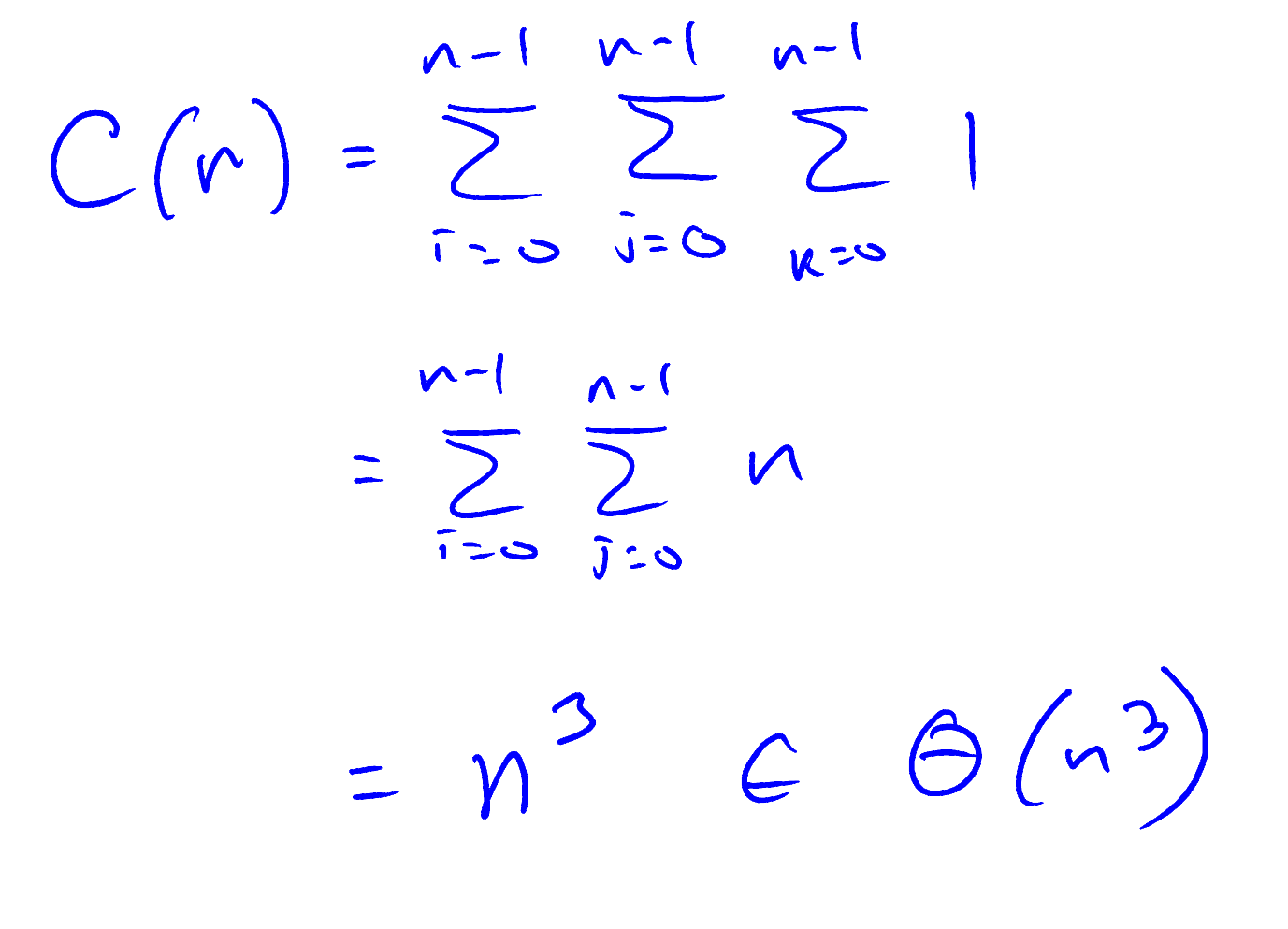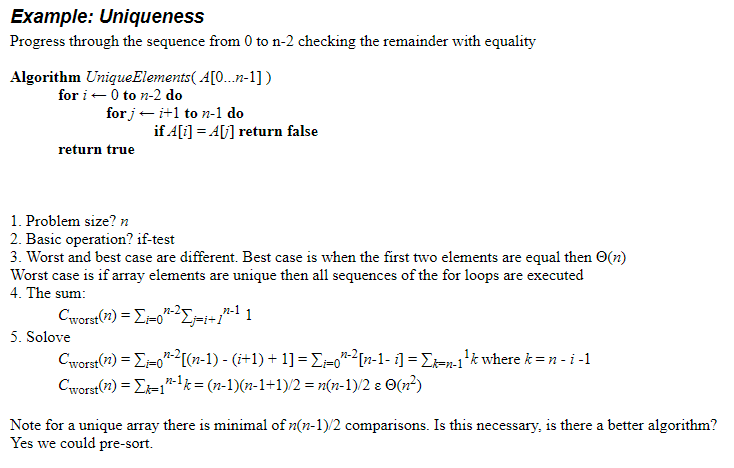Orders of Growth
| Order | Linear | Polynomial | Exponential | Factorial |
|---|---|---|---|---|
| Example | , | , , | , | |
| , |
Exercise:
For each of the following pairs of functions, indicate which one has a higher order of growth.
- and
- same -- within constant multiple
- and
- cubic has higher order of growth than quadratic
- and
- All logarithmic functions have same growth within const multiple (can change log's base by the formula )
- and
- and
- and
- so same order of growth as
- and
- has lower order of growth since
Analysis of Non-Recursive Algorithms

Example 1:
Max Element
Input: an array, A
Output: the largest element in A
maxVal <- A[0]
for i <- 1 ... A.length-1
if A[i] > maxVal
maxVal <- A[i]
return maxVal
What is the input size? (A.length)
What is the basic operation? (Comparison)
What do we expect its complexity class to be? (Linear)
(from previous formula)
Example 2:
Bubble Sort
Input: an array, A of sortable elements
Output: a permutation of A in non-decreasing order
for i <- 0 ... A.length - 2
for j <- 0 ... A.length - 2 - i
if A[j+1] < A[j]
swap A[j] and A[j+1]
return A
What's the input size? n = A.length
Basic operation? Swap
What do we expect its complexity class to be? Polynomial
(the inner cycles happen n - i - 1 times)
Example 3:
Matrix Summation
Input: a matrix, M
Output: The sum of all elements in M
total <- 0
for i <- 0 ... w - 1
for j <- - ... h - 1
total <- total + M[i][j]
return total
Input size?
Basic operation? Addition
Expected complexity class? Linear
Example 4:


Example 5:
